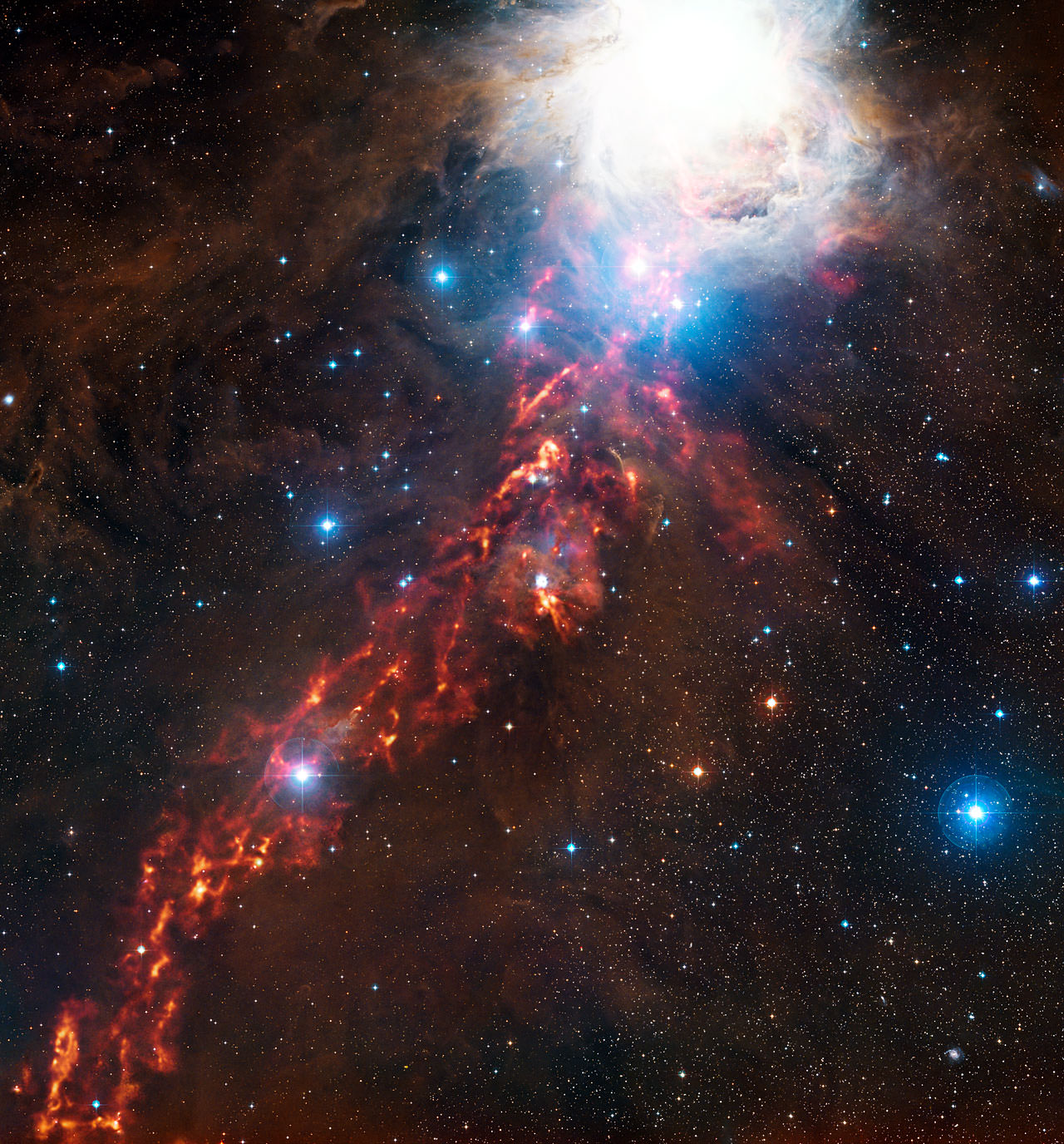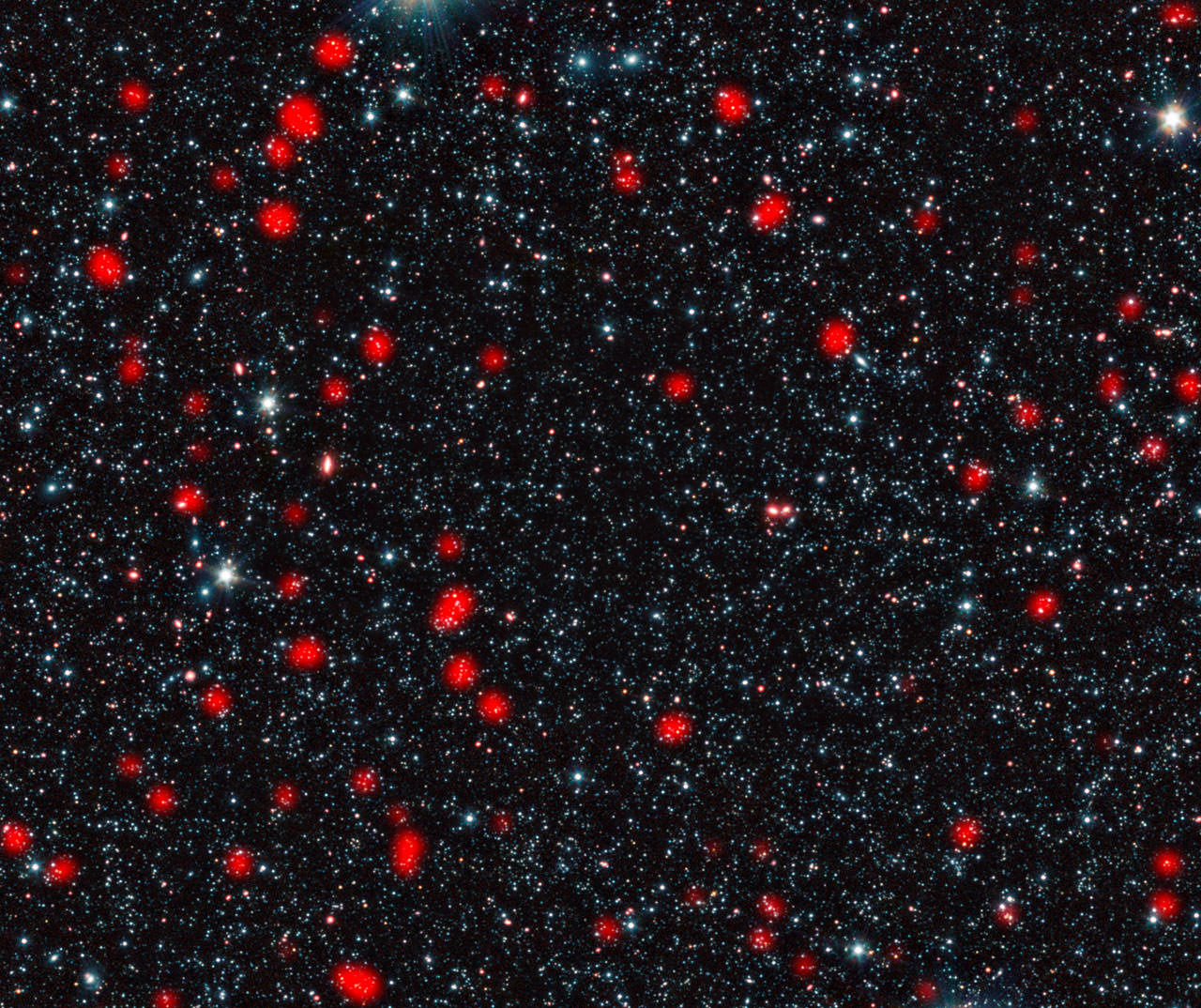The Great Orion Nebula has captivated observers for at least four hundred years, but the ancient Mayans may have known about its secrets long before then. According to legend, the nebula might have been the smoke situated between the “Three Hearthstones” and the light of the emerging stars seen as the very embers of creation itself. Now the ESO-operated Atacama Pathfinder Experiment (APEX) in Chile has revealed what we cannot see. At wavelengths too long for human vision, this new image shows us an ancient fire dance painted in colors of cold interstellar dust.
As we know, deposits of gas and interstellar dust are virtual star factories. However, the very material which creates stars also masks them. So how do we peer behind the veil? The answer is to observe at alternative wavelengths of light. In this case, the submillimetre wavelength reveals what our eyes cannot see… dust grains igniting the view, even though they are just a few tens of degrees above absolute zero. This makes the APEX telescope with its submillimetre-wavelength camera LABOCA, located at an altitude of 5000 metres above sea level on the Chajnantor Plateau in the Chilean Andes, the perfect instrument to play the tune for this cold fire dance.
Take a look around the picture. It’s just a small portion of a vast complex known as the Orion Molecular Cloud. Wafting across hundreds of light years space some 1350 light years away, this rich arena of hot young stars, cold dust clouds and bright nebula is the epitome of stellar creation. The image reveals the submillimetre-wavelength glow in shades of orange and it is combined with visible light for a total visual experience. Note deep ribbons, sheets and bubbles… These are the product of gravitational collapse and the effects of stellar winds. Powerful stellar processes are at work here. The atmospheres of the stars are crafting the clouds much the same way a gentle breeze swirls the smoke from a fire.
Credit: ESO/Nick Risinger (skysurvey.org), Digitized Sky Survey 2. Music: movetwo
As beautiful as it is, there is still science behind the imagery. Astronomers have employed the data taken with ESA’s Herschel Space Observatory, along with the APEX information, to aid them in their search for early star formation. At this point in time, the researchers have been able to verify more than a dozen candidate protostars – objects which appear far brighter at longer wavelengths rather than short. It’s a triumph for the researchers. These new observations could well be the youngest protostars so far observed and it brings astronomers just one step closer to witnessing the moment when a star ignites.
Original Story Source: ESO News Release.



